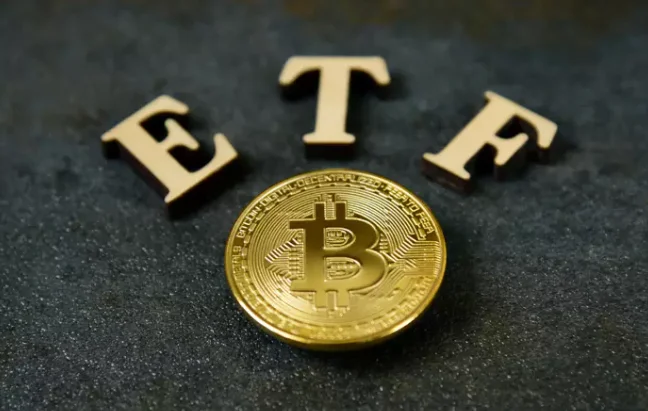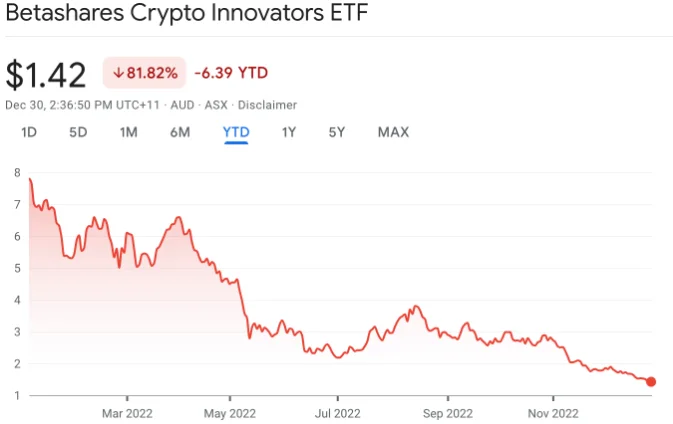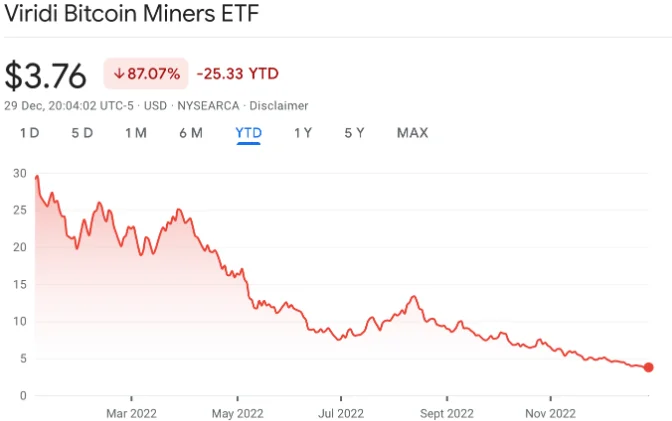ETFs tracking crypto companies have recorded that two worst-performing crypto exchange-traded funds (ETFs) in Australia for the year 2022 are tied to cryptocurrencies, and a similar pattern can be seen in the US.

BetaShares Crypto Innovators ETF (CRYP) and Cosmos Global Digital Miners Access ETF (DIGA) have delivered negative returns to Australian investors year to date (YTD) through December 30 of roughly 82% and 72%, respectively.
The Australian Securities Exchange (ASX) saw the debut of BetaShares’ ETF in October 2021, only weeks before the majority of cryptocurrencies reached record highs that they have yet to recoup.

Exposure to publicly traded blockchain and cryptocurrency firms like Coinbase and the mining firm Riot Blockchain, among others, is provided via CRYP. Mike Novogratz’s investment company Galaxy Digital is the biggest holding at the moment, accounting for 12.3% of its portfolio.
Through the Global Digital Miners Index, Cosmos’ DIGA ETF monitored the performance of a portfolio of businesses dedicated to mining Bitcoin or other cryptocurrencies.
In October 2021, DIGA was similarly listed on the Cboe Australia market during a bad period. Only a year later, Cosmos asked that the ETF, along with two others tracking BTC and Ether, be delisted from Cboe as the value of the fund’s net assets fell below $1 million due to waning interest in cryptocurrencies.
Similar trends have been seen for US-based ETFs, with crypto-related ETFs accounting for the top four worst-performing ETFs, according to data from ETF.com. Inverse and leveraged funds aren’t included in this, however.
The Viridi Bitcoin Miners ETF (RIGZ), which seeks to give exposure to publicly listed crypto miners including Riot and CleanSpark, had the lowest performance. Investors had a YTD return that was minus 87%.

Following closely after were First Trust SkyBridge Crypto Industry and Digital Economy ETF (CRPT), Bitwise Crypto Industry Innovators ETF (BITQ), and VanEck Digital Transformation ETF (DAPP). All of them kept tabs on the cryptocurrency market by owning shares in companies like Block Inc., Coinbase, Riot, Galaxy, and Jack Dorsey’s Block.
DAPP, BITQ, and CRPT all provided investors with negative YTD returns of almost 86%, 84.5%, and nearly 81.5%, respectively.
The crypto business hasn’t been the only one to suffer losses this year, either. U.S. Treasuries, equities, and even real estate had their worst year in decades, and in some instances centuries, during the last 12 months.
The performance of a typical portfolio, composed of a 60/40 mix of stocks and bonds, has been at its lowest level since 1932 when the Great Depression was at its height.
The share prices of MAMAA stocks, which stands for Meta, Apple, Microsoft, Amazon, and Alphabet (Google), a Big Tech company, have fallen by up to 70% over the last year. The value of cryptocurrencies decreased throughout the course of the year by around 64.5%.
